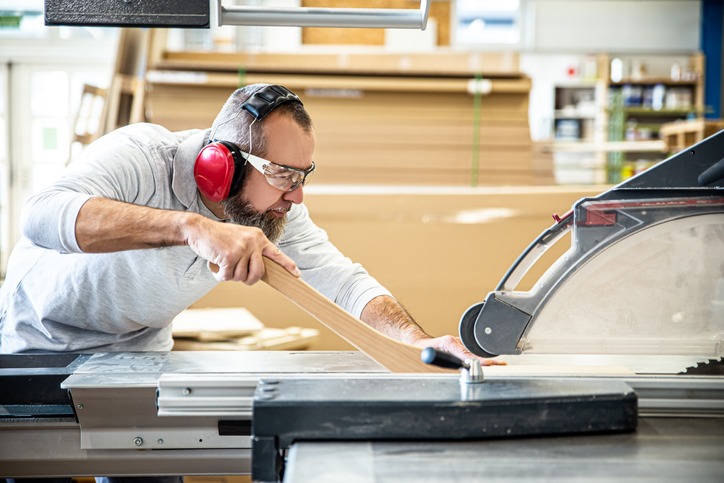Are you an amateur woodworker hoping to grow until you join the big leagues? It starts with knowing and adhering to crucial table saw safety tips. Something as simple as mounting your portable table saw could get you injured if handled carelessly.
That said, this article highlights six table saw safety tips to always bear in mind while utilizing the woodworking tool.
Six (6) Top Table Saw Safety Tips
A table saw—portable or fixed—is an essential tool in every woodworker’s shop. This efficient and versatile tool makes quick work of any piece of lumber.
However, a few potential dangers are associated with using table saws. Thankfully, following the six safety tips discussed below could help you avoid injury while using this power tool.
1. Always examine the tool before use.
It’s always crucial to inspect any power tool before use, table saws included. In addition, you need to be sure the table saw is in excellent working condition, even if you used it the previous day without any issues.
Check for damaged components or loose screws before switching on the table saw. If the power tool makes unusual noises or vibrates strangely, stop using it immediately and consult a pro technician.
2. Learn and know how to use this power tool.
Table saws are powerful, electric-powered tools used for making various cuts. However, they must always be used cautiously, starting with reading a table saw’s manual. Afterward, you can get familiar with the buttons or switches, cutting angles, etc.
You can learn more about table saws and how to operate them safely by watching video tutorials on YouTube. First, pay attention to how the pros use the guarding system. After this, you can practice with caution until you perfect cutting techniques.
If you’re unsure about anything relating to a table saw, don’t hesitate to ask an experienced user.
3. Always wear PPE.
One of the first things to do as soon as you enter your workshop is to wear the most appropriate personal protective equipment (PPE). This is crucial, especially if you’ll be using the table saw in a matter of minutes.
Personal protective equipment includes items such as:
- Eye protection, i.e., goggles.
- Hearing protection: Ensure you can still hear sounds within your environment.
- Gloves made of material that never gets caught on blades.
4. Ensure you install the blade guard.
A blade guard is an excellent way to stay safe while operating a table saw. Blade guards are devices that cover the spinning blades of table saws. They’re gentle reminders to be careful while making your cuts.
A blade guard also allows you to push the stock through the cutting line without needlessly exposing the blade. That way, they help prevent accidents while guaranteeing your safety when using a table saw.
5. Keep your work area dust-free and clean.
Many woodworkers have a habit of ignoring debris and dust that has built up around the table saw. Unfortunately, this can be a grave mistake and a setup for an accident.
Don’t wait until dust and debris make a home out of your woodworking table. Instead, develop the habit of picking up pieces of wood immediately after using the table saw. Then, find a method of getting rid of the debris and dust that accumulates quickly around your table saw.
It’s advised that you establish a dust collection system, though a broom and a dustpan aren’t bad ideas to start with. Dust collection systems help ensure your workshop remains clean while working and not until you finish the project for the day. In addition, using a dust collection system enables you to stay on top of the dust- and debris-collection problem.
6. Check stock for knots, nails, etc.
Before switching on and using your table saw, always check the stock to ensure it’s free of knots, screws, nails, as well as any other object that could potentially cause a dangerous kickback or damage to the blade.
A table saw kickback occurs when a piece of wood gets ripped and pinches the blade. It could also happen when a wood piece turns outward against the spinning saw blade and propels backward toward the machine operator at an incredibly high speed. Kickbacks cause major injuries as the wood may strike the operator’s head, torso, or chest.
Nails, knots, screws, etc., have the potential to cause kickbacks. Therefore, inspect the piece of wood you want to work on carefully. If the stock is clear, position it perfectly on the saw table and align it with the blade.
Conclusion
There’s much more to avoiding injury and staying safe while using a table saw. You shouldn’t limit your safety measures to the tips outlined in this post, though they would help immensely if you stick to them. Rather, you should keep learning and getting informed on the best ways to stay safe while engaging in your daily woodworking activities.

